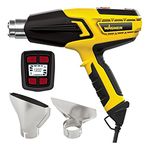A cautionary tale
In each issue’s “Letters” column, you publish a short message called “Your Safety,” which cautions readers that home building is inherently dangerous and urges them to be careful. I recently had this message reinforced in a spectacular way.
While working in an electrical panel, I had a near miss because of complacency and a lapse in attention. I wasn’t injured, so it was a cheap lesson, even though I retired the $200 torque screwdriver that I bridged across a live busbar and the panel housing.
I had shut off the main breaker and covered the still-hot terminals on the meter side of the breaker with tape. What I didn’t protect with tape or any other barrier was a 1⁄4-in. gap where the live busbar was exposed. As I tightened the terminal screws, I was talking with the homeowner and not giving my full attention to what I was doing. The tip of the screwdriver touched the busbar, and the handle came in contact with the panel edge.
The arc flash left a bit of soot and vaporized steel on the heel of my hand, but by a stroke of luck, all I got was a slight first-degree burn. Immediately after the arc flash, before I realized that I wasn’t seriously hurt, I remember looking at my hand and thinking that skin grafts are probably not going to be any fun at all.
Over the years, I’ve taken several electrical-safety courses. I also have worked for and with some of the most safety-conscious guys out there. I consider myself to be very safety conscious, but all it took was a momentary lapse.
—Clifford A. Popejoy, Sacramento, Calif.
What about color fading with synthetic decks?
As a remodeler for more than 19 years, I appreciated Chris Green’s article on synthetic decking (FHB #172, pp. 44-49), which answered a lot of questions about these new materials. However, he failed to touch on color fading. UV-rays are the enemy of outdoor plastics, and I would consider lasting color at the top of my list when choosing a synthetic-decking product. What good is a lifetime warranty if the decking looks like a faded plastic sandbox after a few years?
—Robert Iannucci, Charlotte, N.C.
Chris Green replies: Your question is a fair one, but I don’t think that color retention is the problem today that it was in the past. Most manufacturers say that some fading does occur, but it’s minimal. I looked at product samples with accelerated fading, and they still had good color retention. (UV-stabilizers are added during the manufacturing process.) Of course, those samples were created under artificial conditions; real-world results may prove less flattering. As with other products new to market, we’ll have to wait and see how synthetic decking performs over time.
Loves his laser
With regard to deck building, John Spier should consider retiring his 13-ft.-long spirit level (FHB #172, “Better Ways to Frame a Deck,” pp. 50-55) and buying a little portable laser. I’ve been building and remodeling for almost 30 years, and my five-beam self-leveling RoboToolz laser (www.robotoolz.com) is just about the best purchase I’ve ever made. At $190, it was a flat-out bargain. It quickly and accurately performs all the leveling chores necessary for deck building.
The fact is I don’t even use a spirit level to plumb walls anymore. Instead, after the wall is assembled on the deck, I put matching crosshair reference marks on the top of the bottom plate and on the bottom of the top plate, right near the corner. Once the wall is up and the bottom is nailed off, I set the laser directly on the sill plate and swivel the nifty offset base until the beam is centered on the lower crosshair. After that, it’s a simple matter of racking the wall until the beam zeroes in on the top crosshair. That’s it. You’re plumb in both directions. No more moving a level back and forth at the corner. I’ll admit I double-checked with my 4-ft. level the first few times, but the laser was always dead on, so I don’t even bother anymore.
—Arne Waldstein, Housatonic, Mass.
Says vent-free appliances are safe
I’m sorry that you didn’t call the Vent-Free Gas Products Alliance to determine exactly what information was missing or misused in your discussion of direct-vent vs. vent-free gas fireplaces (FHB #171, “What’s the Difference?” p. 126). Ventfree gas appliances are selling at the rate of 1.5 million units per year in 49 states. California is the only state that does not allow them throughout the state. Why didn’t you print that your readers could request a free copy of our consumer guide, which would answer their questions, rather than try to scare them from using vent-free appliances? Why would so many manufacturers produce these products if there were any problems?
Clean-burning vent-free gas appliances function well within established indoor-air-quality guidelines, even for sensitive populations. All products meet American National Standards Institute (ANSI) requirements for construction, safety, and performance, as confirmed by nationally recognized independent testing laboratories. These units offer a safe and effective supplemental heating option to millions of American homeowners and have an exemplary safety record. Vent-free gas appliances are used safely by satisfied customers in more than 16 million American homes. Innovations such as the Oxygen Detection Safety Pilot, which monitors oxygen levels in a room, demonstrate our commitment to safety and quality products. At our Web site (www.ventfree.org), consumers can read the third-party research to gain an understanding of the technology so that they can make an educated decision.
— Mary Smith Carson, Vent-Free Gas Products Alliance, Arlington, Va.
Opinions vary on vent-free fireplaces
I find it unbelievable that you can blandly and uncritically compare sealed-combustion gas fireplaces to vent-free gas fireplaces (FHB #171, p. 126). The advantages of turning your home into the exhaust pipe for your fireplace, dumping large quantities of water into interior spaces that we try to keep dry, and leaving a window or duct open to supply fresh air in frigid weather totally escape me. Relying on sensors and control systems to ensure safe indoor air that didn’t have to be polluted to begin with is not prudent. Breathing combustion by-products at any concentration is not prudent. Dumping uncontrolled amounts of water vapor inside building envelopes with unknown characteristics and limits is not prudent. And installing a heating appliance that requires an open window to ensure safety is just incomprehensible.
Americans are experiencing an epidemic of child asthma, IQ loss, and other health problems related to poor indoor-air quality. The air in our homes is already polluted to unhealthy levels by a myriad of mostly uncontrollable toxic substances (see www.lungusa.organd www.safer-products.org, among others). Keep in mind that products like vent-free gas fireplaces are never tested in synergy with all the other pollutants we already have in our homes and bodies.
Sealed-combustion appliances are readily available at about the same cost as vent-free units and have fewer health and safety hazards than vent-free designs. As a builder, an energy-efficiency consultant, and an advocate of building science, I would never suggest to anyone that these two technologies are just a matter of personal choice, as your article appears to. You have a responsibility to your readers to discern the difference between manufacturers’ hype and the real-world consequences of building choices.
—Alan Van Zuuk, Eugene, Ore.
You forgot HVAC costs
As an HVAC contractor, I was blown away by the fact that there was no consideration for heating, ventilation, and airconditioning in John McLean’s article “How Much Will It Cost?” (FHB #171, pp. 88-93). Even the most basic system starts at around $10,000.
But Mr. McLean is not alone in his neglect of the mechanical systems and the need to incorporate them into the building design. I have worked on far too many houses where there has been no consideration for how these systems will be installed, how the installation may affect the finished look of the building, and how comfortable the clients will be once they start living in their home.
One final note: It should be imperative for architects and designers to inform their clients how much they should expect to spend once they start living in their new homes. What good is your dream home if you can’t afford the utilities to live in it?
—Pat Hodgson, via email
John McLean replies: Your point is excellent. The cost matrix should have contained a line item for mechanical systems.
With regard to your final point, I wish I knew how much a client’s utility costs would be. In my experience, utility costs vary more based on the personal conservation habits of the homeowners than on the type of heating, ventilating, and air-conditioning systems that they choose.
Synthetic decks get hot
I just received your June/July issue and noticed that the cover article was about synthetic decking (FHB #172, pp. 44-49). I replaced my deck last year with ChoiceDek, a synthetic product. I wish I had known how hot it gets. Our deck, which has an unshaded, southern exposure, is blazing hot even when the temperature is not that high (low to mid 80s). I don’t know if this issue is common to all synthetic decking, but it probably should be considered when making a purchase.
—Teresa Althoff, Bucyrus, Kan.
One of the biggest drawbacks of synthetic decking is the heat it absorbs. A friend in northern Michigan built a dock out of synthetic decking. It was so hot that it could not be walked on with bare feet. I have heard similar complaints from others who have built decks with synthetic products. Recently, I asked three or four vendors at a home show about it. They all said, “It gets hot.”
—Pat Gillula, via email
Fine Homebuilding Recommended Products
Fine Homebuilding receives a commission for items purchased through links on this site, including Amazon Associates and other affiliate advertising programs.

Reliable Crimp Connectors

Affordable IR Camera

Handy Heat Gun






















